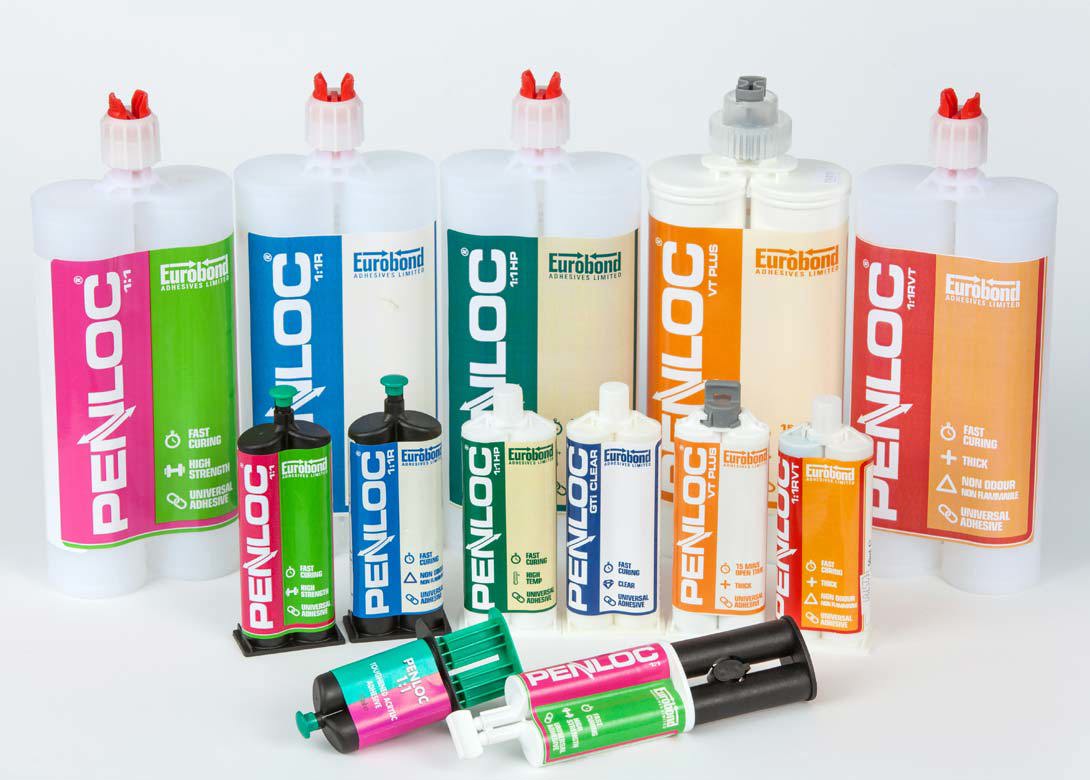
Structural bonding as an alternative to mechanical fixing or welding has become increasingly popular amongst sheet metal fabricators, construction, and specialist architectural metalworking companies in recent years. Particularly as businesses are seeking to reduce costs and improve finished product design – without reducing integrity.
Technical advances, and the development of new bonding solutions, have dramatically improved the performance of structural adhesives in recent years. Now more than ever, these benefits have contributed to the dramatic take up of structural adhesives.
Bonded parts need to be structurally sound and ready to handle as quickly and efficiently as possible, with minimal wastage from the chosen adhesive. In the past, wastage was often a common and costly bi-product of using adhesives. However, new designs in mixer nozzles and dispensing cartridges, together with a little training on the correct method of dispensing adhesive, has effectively ‘designed out’ this problem and propelled structural bonding into the limelight as a very cost-effective and efficient method of joining metal substrates.
Adhesives give the modern designer far greater flexibility allowing them to create products with more appealing cleaner lines that cannot be achieved by traditional riveting, welding or other mechanical fixing methods.
Two component toughened acrylic structural adhesives
These types of adhesives are packaged in a two part cartridge containing hardener and resin. As the adhesive is expelled from the cartridge it mixes in a spiral nozzle and a chemical reaction starts the curing stage. Toughened acrylic structural adhesives are fast curing, resistant to moisture, impact, shock and vibration.
Most toughened acrylic structural adhesives will be multi‑substrate bonding adhesives giving good adhesion to most metals, plastics, composites, glass, wood, stone, granite, ceramic and many more materials besides. They can tolerate different rates of thermal expansion from differing substrates and some can tolerate powder coating temperatures of 180°C after being bonded.
Penloc® 1-1 for example, is a high performance adhesive and can withstand usual weathering and temperatures of around -55°C to +125°C. Penloc adhesive is ideal for bonding/fabricating decorative architectural metalwork, balustrades, stainless steel cooker hoods, lift car and escalator fabrication or refurbishment. It is also ideal for use on decorative finished materials such as brushed stainless steel or brushed aluminium.
Traditionally, welding these materials will leave burn marks or indentations that require finishing and rework that all cost time and money. Penloc® 1-1R is a unique non-odour and non-flammable structural adhesive and is ideal for use in confined spaces or poorly ventilated areas or indeed on-site work that may restrict the use of flammable materials. Penloc adhesives from Eurobond Adhesives Ltd will cure to a handling strength in just 3 to 5 minutes leaving the user free to carry on with other work. It will fully cure in one hour. Typical tensile shear strength values of 276kg/cm² can be achieved when bonding steel and 224kg/cm² on aluminium.
One component flexible structural adhesives
These are very slow curing, strong and resilient adhesives that cure by the absorption of moisture from the ambient atmosphere and the surface moisture present on the substrate. However, it is important to note that these types of adhesives should not be applied in temperatures at or below 5°C. At this temperature, all moisture curing or aqueous adhesive’s curing mechanisms are suspended. Eurobond Solo® for example is a polymer hybrid adhesive that cures to a tough, flexible bond. It will bond most metals, plastics, wood, composites, glass and many other substrates in any combination.
Eurobond Solo has been specifically formulated to build high initial bond strength on a variety of complex substrates including those associated with industrial prefabricated structures, portable utility buildings, dwellings, containers and vehicle bodies. Eurobond Solo has also been designed to hold unsupported components against a vertical plane or soffit soon after application. Eurobond Solo is very user-friendly and environmentally friendly. It contains no hazardous elements, contains no free isocyanates, VOCs, acids or halogens. For most applications primerless adhesion can be obtained. Eurobond Solo is tolerant to damp substrates and does not shrink on curing.
Eurobond’s range of single part flexible adhesives includes Eurobond SafeFix® – a flame retardant flexible adhesive that will bond just about any material combination; Eurobond MultiSeal® – an exceptional adhesive and sealant that will tolerate extreme chemical environments; Eurobond QuickFix® – a flexible MS Polymer adhesive that offers a fast cure speed and initial grab time; and finally Eurobond ClearFix – which can be used for wanting a transparent bond line perhaps for bonding clear plastics or glass.

Having spent a decade in the fastener industry experiencing every facet – from steel mills, fastener manufacturers, wholesalers, distributors, as well as machinery builders and plating + coating companies, Claire has developed an in-depth knowledge of all things fasteners.
Alongside visiting numerous companies, exhibitions and conferences around the world, Claire has also interviewed high profile figures – focusing on key topics impacting the sector and making sure readers stay up to date with the latest developments within the industry.
Don't have an account? Sign Up
Signing up to Fastener + Fixing Magazine enables you to manage your account details.